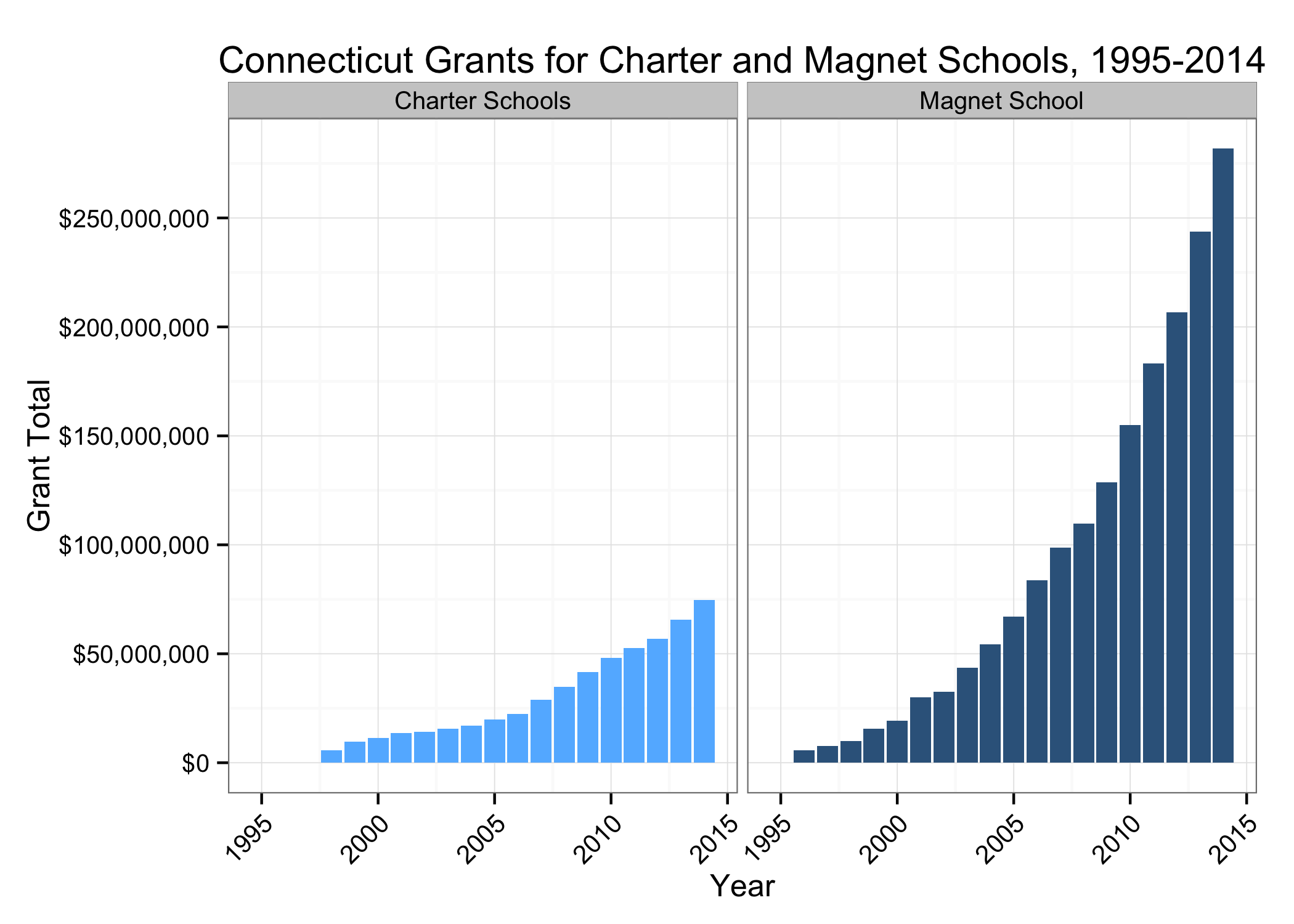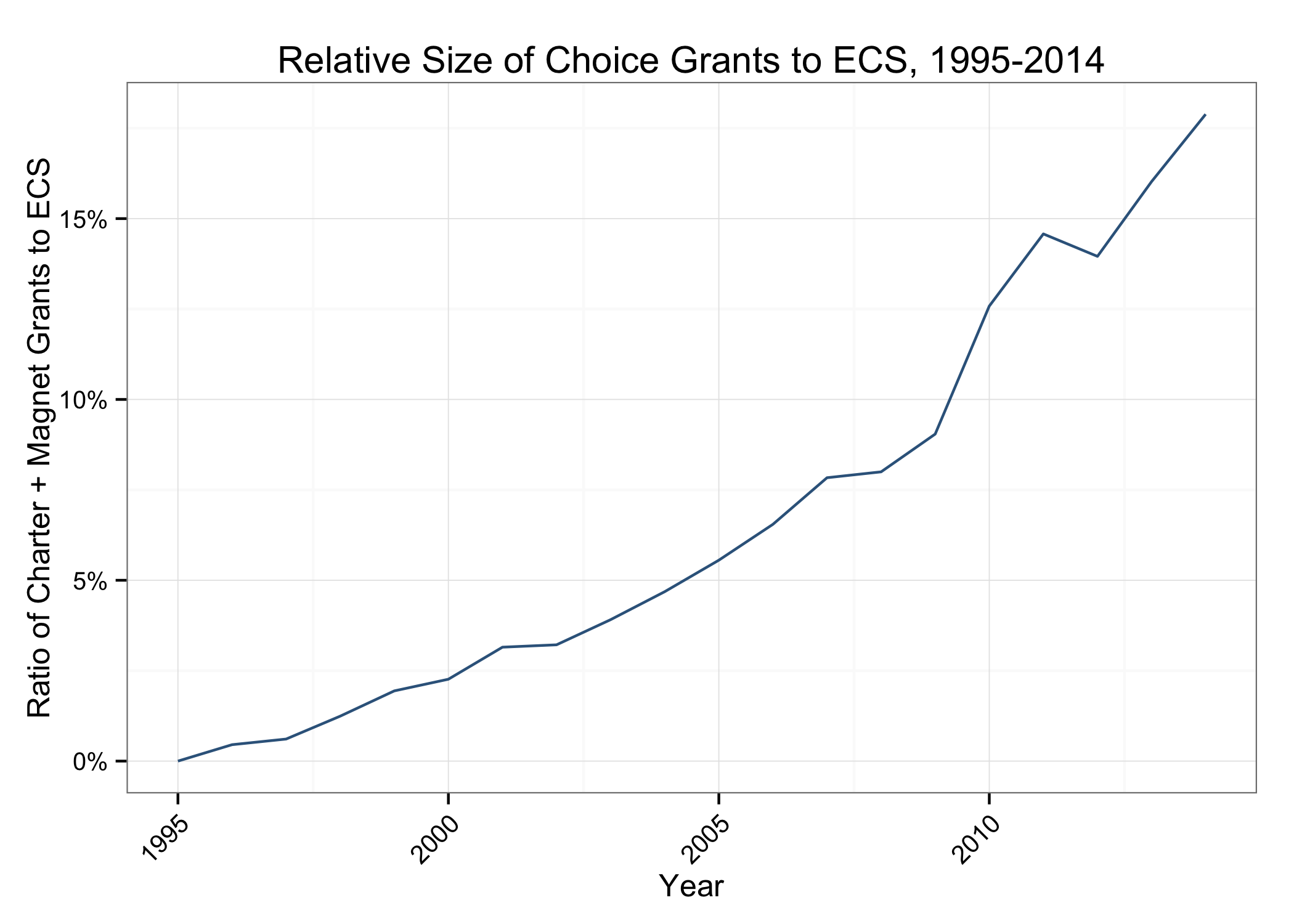Outdated funding systems are limiting options for families in Connecticut.
By Alex Spurrier
February 9, 2015
The Growth of School Choice in Connecticut, 1995-2015
For years, families in Connecticut demanded more public school options for their children. Over the last two decades, state funding for magnet and charter schools grew significantly.

Even with this level of growth, thousands still end up unable to attend magnet schools or charter schools due to limited capacity. Wouldn’t it seem reasonable that lawmakers would work to expand the number of public school options available to families?
Unfortunately, Connecticut may be heading in the opposite direction. Some lawmakers are considering putting a moratorium on any further expansion of magnet schools and charter schools.
Choice funding in Connecticut: too big to exist as line-items?
Simply put, the current system of funding school choice is expensive and downright Byzantine. A student can have their public education funded at least 10 different ways based on the type of school they attend.1 As the chart below indicates, this complicated system of funding is now equivalent to more than 15% of the main grant to school districts, the Education Cost Sharing grant (ECS).

Freezing funding to schools of choice would be an easy way for legislators to avoid answering a simple question: why should more than 50,000 students have their public schools funded in different and inequitable methods?
What’s the solution?
It’s going to be a lean budget year with many tough short-term choices, but lawmakers need to think seriously about the future of our school finance system. I hope they keep these principles in mind:
- All public school students should have their public education funded by a combination of the state and by their town of residence.
- The ratio of state/town funding should be determined by the relative wealth of the town.
- A student’s total level of funding should be determined by their learning needs.
- The full funding for a student should follow them to the public school of their choice.
A funding system guided by these principles would benefit the state by focusing the school finance system on town wealth and student need instead of the label a public school carries. It would benefit towns by giving them a predictable level of costs - no matter what schools families choose, towns would contribute the same level of funding to their education. Most importantly, it would provide families with more choices for their children.
-
As noted in a previous post, this was detailed in the ECS Task Force’s Final Report ↩︎
- Posted on:
- February 9, 2015
- Length:
- 2 minute read, 405 words